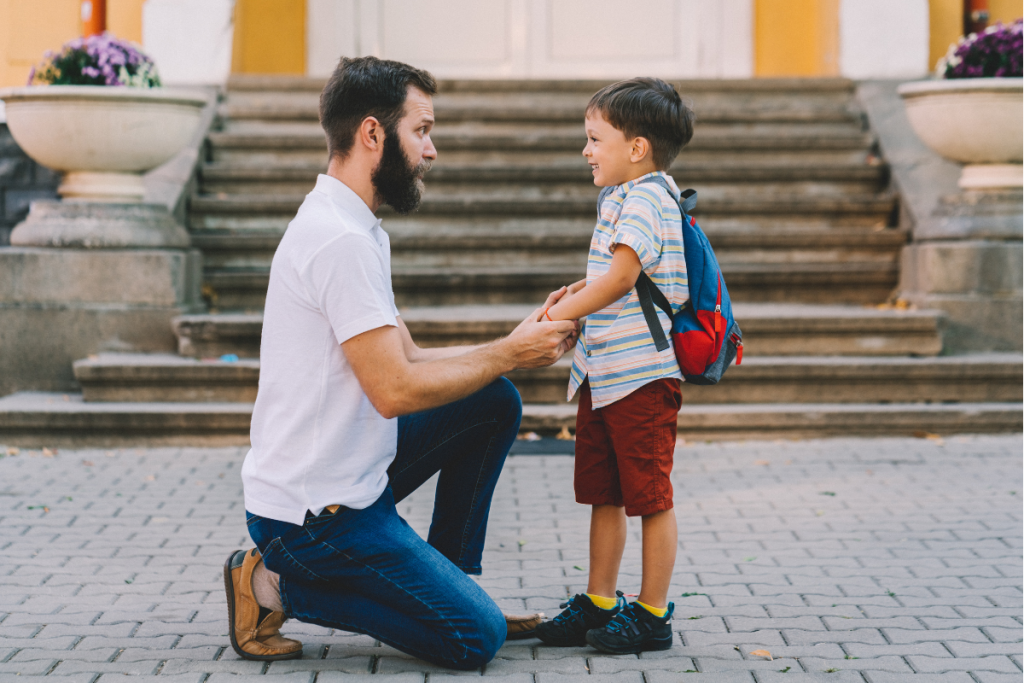Parenting is admittedly one of the most daunting tasks we undertake in life. It’s far more complicated than just providing food, clothing, and shelter to our little ones. It involves nurturing, teaching and bearing the responsibility of molding them into conscientious adults.
One approach that’s gaining traction is “conscious parenting” and “conscious discipline.” These practices make us aware of our actions and reactions, helping us guide our children with understanding, love, and patience. If you’re interested in embarking on this enlightening journey, here are five simple steps to get you started.
Step 1 — Educate Yourself On Conscious Parenting And Discipline Principles
Firstly, understanding the concept of conscious parenting and conscious discipline is vital. Transitioning to a conscious parenting style starts with an essential first step – education. It’s about being completely present and making careful, considered decisions rather than reacting offhandedly.

It’s a shift from strictly authoritative parenting to thoughtful guidance. Possessing detailed knowledge of conscious discipline principles puts you in the driver’s seat, preparing you to deal with any challenging behaviors with composure.
Key lessons that conscious parenting discipline teaches exemplify how it differs from traditional punitive methods, emphasizing self-regulation and social-emotional learning. Primarily, it focuses on how kids push boundaries and how parents can consciously respond.
Here’s A Brief Rundown Of What You Should Know:
- The Seven Powers for Conscious Adults: These include composure, encouragement, assertiveness, choices, empathy, positive intent, and consequences.
- The Brain State Model: Understand how to identify and respond to your child’s three brain states: survival, emotional, and executive.
- Skills of Discipline and Structures: Knowing key skills like composure, empathy, and assertiveness will help you create a safe place for your child and manage emotions effectively.
Training yourself first can help your child develop essential problem-solving and emotional management skills. So, stay committed, continue learning, and you will grow and develop as a conscious parent.
Doing so makes you model the same for your child, and that’s worth every effort.
Step 2: Prioritize Connection Over Correction
“With conscious discipline,” says Becky Bailey, “we focus on connection rather than correction.” This approach replaces punishment with understanding, promoting a stronger bond and emotional intelligence.
Why is connection so important?
Conscious parenting discipline emphasizes that every interaction with our children can increase connection or distance. So, instead of simply reacting to your child’s actions, strive to understand their feelings and validate their emotions. This forms the foundation of a respectful, understanding family culture, paving the way for teachable moments.

These tips will guide you:
- Reflect and Understand: Try to identify your child’s brain state. Are they feeling insecure (survival state), upset (emotional state), or calm (executive state)?
- Acknowledge and Validate: Instead of punishing bad behavior, validate your child’s feelings. Say, “I see you’re upset because you can’t play with your favorite toy.”
- Connect Before Correct: Approach your child with empathy before imparting discipline. Use affectionate touch or make eye contact to create a connection. Remember – stay in control and manage your emotions.
As parents or caregivers, we should focus on teaching children self-regulation. This means helping them to control their reactions, handle their emotions, and turn challenging situations into opportunities for learning – not just correcting behavior.
Parents need to become masters of their emotions first to help children well. Connection, therefore, is at the heart of the parenting philosophy called conscious discipline. To help children grow, we must build connections before teaching the child how to behave properly.
Remember, the objective is to raise children who are empathetic, responsible, and able to self-regulate – fostering these traits requires connection above all.
Step 3: Cultivate Self-Awareness And Emotional Intelligence
Begin with an introspective journey. Explore your parenting style and how it aligns with your personal beliefs and values. Are your reactions a product of old habits? Are they influenced by how you were parented? It’s essential to be aware of your feelings, thoughts, and actions in order to manage them.
The parenting philosophy of Conscious Discipline moves beyond discipline as a social-emotional learning tool. It helps parents foster emotional intelligence, greatly influencing how well adults and children manage their feelings, demonstrate empathy, and navigate social interactions.
Mastering emotional intelligence involves:
Instead of reacting to your child’s behavior, respond consciously. Positive parenting relies on maintaining composure.
Understand and acknowledge your child’s emotions and needs.
Instead of punishment, turn mishaps into teachable moments. Constructively resolve conflicts.
Conscious Parenting Discipline instills practical, trauma-informed strategies to cultivate emotional intelligence. Parents’ focus on their empathy enhances their children’s social-emotional skills.
Thus, Conscious Discipline demands a shift in our traditional approach to discipline. It asks parents to delve deeper into their reactions and emotions, improving Self-Awareness and Emotional Intelligence while teaching their children to do the same.

Step 4: Set Boundaries And Be Consistent
Setting clear boundaries and consequences is crucial to create a secure environment. State explicitly what’s expected and the consequences when guidelines are not met. Remember to stick to it and be consistent. Consistent rules provide a sense of security and predictability for children.
That said, keep in mind that Conscious Discipline is not punitive. Instead, it sees “bad behavior” as a cry for help. Look beyond the behavior to understand what your child is really communicating.
Be explicit about your expectations and discuss them with your child. Ensure these rules are suitable for the child’s developmental stage. If you set a boundary today, stick to it tomorrow. Consistency helps children understand and predict responses, which in turn grows their problem-solving capabilities. Instead of drawing focus on what they shouldn’t do, guide your children towards desirable behavior.
This step transforms your approach to discipline from simply reacting to consciously responding. Stepping back and understanding why children push boundaries helps create teachable moments instead of confrontations, proving to be a truly transformative approach to parenting.
Step 5: Practice Mindfulness And Meditation
Patience is your best weapon in this journey. Children will be children. They will have tantrums, they will defy, and they will push boundaries. Reacting impulsively may provide a temporary solution, but it won’t teach them valuable life lessons. Demonstrating patience will encourage them to do the same.
According to Conscious Discipline, mindfulness helps foster emotional intelligence by aiding parents to respond rather than react to their child’s behavior consciously. It builds resilience, promoting a move from punitive methods to more compassionate approaches.
Mindfulness training can aid parents in:
- Self-Regulation: Being mindful helps to self-regulate, enabling parents to manage difficult situations with composure.
- Connecting: Mindfulness increases connection, allowing parents to understand what their children communicate.
- Teaching: By being present, parents create trust, leading to teachable moments instead of confrontations.
Implementing mindfulness in your daily routine can be simple. Here are some practices you can do with your children:
- Breathing Exercises: Teach your child deep breathing exercises. It’s a tool they can use anytime to calm their mind and body.
- Quiet Time: Designate a quiet time each day where you and your child can practice mindfulness together. It could mean meditating, listening to soft music, or soaking in nature’s beauty.
Conscious Discipline teaches that practicing mindfulness allows parents to control their emotions, modeling these skills for their children. It helps parents transform interactions with their children, enhancing social-emotional learning.

Finally, practice empathy. Try to understand things from your child’s perspective. Empathy builds connection and trust, teaching children the importance of understanding and respecting others’ feelings.
Remember, conscious parenting doesn’t mean you’re a perfect parent—it means you’re aware, attentive, understanding, and always willing to learn. It’s a journey, not a destination, filling each moment with quality interactions. Strive to evolve with your child, implementing conscious discipline so they can grow into individuals who are responsible, empathetic, and self-aware.

Leave a Reply